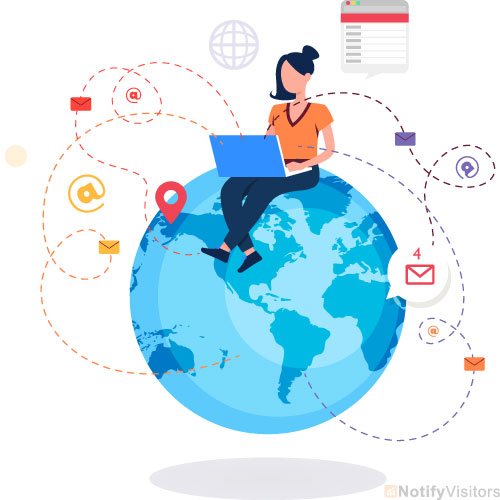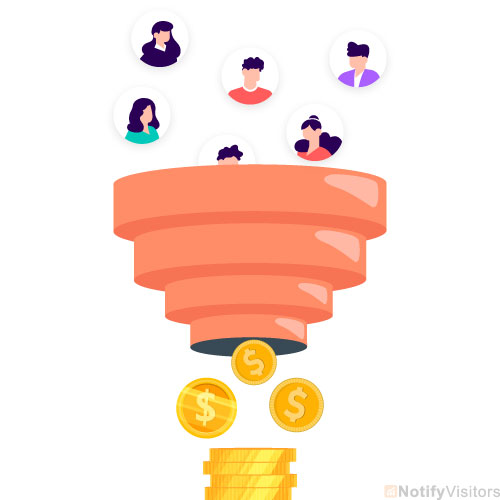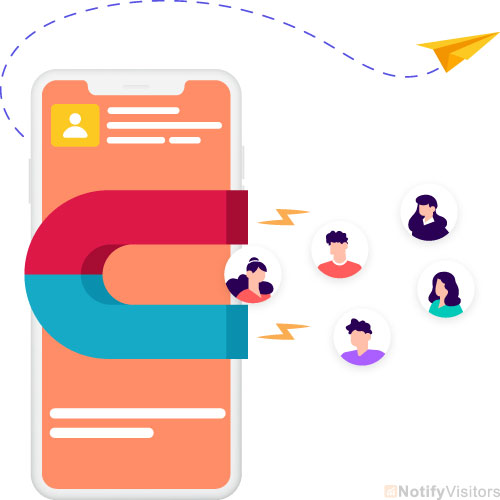With today’s world getting increasingly competitive, businesses have to ensure an outstanding user experience. The best way to ensure it is by tailoring your marketing communications to each user. This is where segmentation came into the picture. Go through our segmentation statistics for [year] to know how effective it has been in conquering the market.
But before that, let’s get into the basics.
Click here to know What is Segmentation?
Contents
What is the Importance of Segmentation?
Segmentation is one of the few things that can lower risks while increasing returns when it comes to marketing your business. That’s why many businesses strongly believe in incorporating segmentation into their strategy.
Segmentation can help you target your consumers better with personalized marketing promotions, design sales strategies to increase conversions, and even shape IT outsourcing solutions or new products that meet the specific needs of each segment.
You need not believe our words blindly. Only “Seeing is Believing”. So, here is our collection of segmentation statistics for [year]. They’ll show you how customer segmentation has enabled real-life businesses to enjoy amazing results.
Segmentation Statistics for [year]
Here are several useful segmentation statistics for [year] you should know.
1. General Segmentation Statistics
- 80% of audiences tend to do business with a brand that personalizes their experience with it. That is why it is important to segment your audience to send them tailored marketing communications.
- Nowadays, marketers create content for multiple consumer segments. The majority, around 3 out of 4, typically target three segments. However, only 4% of marketers use multiple types of data for segmentation, while 42% of them don’t segment at all.
- 70% of marketers use market segmentation.
- 80% of companies that use market segmentation report increased sales.
- The average company uses 3.5 different segmentation criteria.
- The most common segmentation criteria are demographics, psychographics, and behavior.
- Demographic segmentation is the most effective for B2C businesses.
- Psychographic segmentation is the most effective for B2B businesses.
- Behavioral segmentation is the most effective for e-commerce businesses.
2. Segmentation Statistics Related to Email

- A study by Hubspot revealed that 30% of the marketers who participated in it used market segmentation techniques to improve email engagement.
- Segmented campaigns had 14.31% higher open rates and saw 101% more clicks than non-segmented campaigns.
- Email marketers who segmented their audience before campaigning stated that the revenue generated increased to up to 760%.
- Targeted and segmented emails bring in 58% of all revenue.
- 88% of users agree they are more likely to respond to an email favourably if it looks like it’s been specifically created for them.
- 10% of respondents are annoyed by too little or no personalization.
- Only 4% of marketers use highly-personalized targeting, 13% use segmentation for different audiences, 31% claim that they use basic segmentation (2-5 criteria), and 53% do not target at all.
- 58% of revenue is generated thanks to segmented and personalized emails.
- 62% of marketers say that personalization is the most effective technique.
- Today, 45% of marketers use trigger-based emails. However, they can be responsible for as much as 20% of your email marketing revenue.
- Marketers who segment their email lists by purchase history see a 10% increase in opens and a 15% increase in clicks.
- Marketers who segment their email lists by location see a 12% increase in opens and an 18% increase in clicks.
- Marketers who segment their email lists by interests see a 15% increase in opens and a 20% increase in clicks.
3. Segmentation Statistics Related to ROI

- With the majority of people preferring highly personalized communications from the brand, segmented, triggered, and targeted campaigns bring in 77% of marketing ROI.
- Marketers who use segmentation see a 20% increase in ROI.
- Segmentation can help businesses increase their conversion rate by up to 50%.
- Segmentation can help businesses reduce their marketing costs by up to 30%.
- Segmentation can help businesses improve their customer lifetime value (CLV) by up to 25%.
- Segmentation can help businesses increase their customer satisfaction by up to 15%.
4. Segmentation Facts for Better Understanding of Customers
- Segmentation makes firms 60% more likely to understand customers’ challenges and concerns and 130% more likely to know their intentions.
- Segmenting customers based on personas provides 90% of firms with better knowledge about their audience. And 82% of firms using personas have come up with an improved value proposition.
5. Segmentation Statistics Related to Impulse Buying
- In a study, 49% of participants stated that they purchased something on impulse as it was presented to them with a personalized message.
- 59% of shoppers make impulse purchases when they are in a good mood.
- 48% of shoppers make impulse purchases when they are feeling stressed or anxious.
- 39% of shoppers make impulse purchases when they are bored.
- 29% of shoppers make impulse purchases when they are tired.
- 28% of shoppers make impulse purchases when they are feeling social.
- 27% of shoppers make impulse purchases when they are feeling pressured by others.
- 26% of shoppers make impulse purchases when they are feeling impulsive.
- 25% of shoppers make impulse purchases when they are feeling confident.
- 24% of shoppers make impulse purchases when they are feeling nostalgic.
- 23% of shoppers make impulse purchases when they are feeling curious.
6. Segmentation Statistics Related to Lead Generation

- Companies that surpass their goals set for lead and revenue generation are those that segment their audience. Reports say that such firms are 2.3 times more likely to study their buyers’ intent and 1.6 times more likely to understand their challenges and fears than their counterparts. (NotifyVisitors)
7. Segmentation Stats Related to Website Construction
- Segmentation enabled companies to build websites that are two to five times more successful than those that provide generic content for their entire audience. This means having sites that allow different categories to self-select the content that suits them the most. For instance, a clothing brand offering separate pages for kids’, ladies’, and gents’ clothing.
- If you choose to personalize a single digital channel, let it be your website. For, 28% of the audience agree that a business’s website is the most vital medium for personalization and 49% say that it is one of the two main mediums for personalization.
8. Segmentation Stats Related to Customer Acquisition Expenses

- With smarter segmentation and the creation of personas, businesses can lower the expenses related to acquiring those customers. MetLife, an insurance giant & MetLife stock market cap is over $ 56 billion. It used complex segmentation techniques to group its audience based on their behaviors and attitudes. This resulted in the lowest need for one-on-one attention from their sales team. This has given them the confidence to set their annual savings target to $800 million.
9. Segmentation Stats Related to Finding Prospects
- Segmentation can also help you reach prospects that look like your current best customers. For instance, the Royal Canadian Mint, a firm that manufactures and dispenses Canada’s coins and trades collectible coins, tapped into this potential of segmentation. It used its entire customer data to create a persona that constituted its highest-value customers. They then used this info to develop online and print messages and tweak their marketing campaigns. This helped them gain 140,000 prospects in a single campaign.
10. Segmentation Statistics Related to Gaining Access to New Markets
- Segmentation also allows businesses to identify new markets. This is done by helping you understand your current customers better. For, this facilitates eliminating reaching out to an irrelevant audience in vain. For instance, Canon, the renowned Camera manufacturing firm, whose products were mainly used by professionals, decided to expand its reach.
11. Segmentation Statistics Related to Mobile Apps
- 31% of millennials, 27% of Gen X, and 19% of Baby Boomers list mobile apps in their top two most vital mediums for personalization. So, brands that have apps should consider segmenting their mobile app audience and catering to the specific needs of each segment. However, apps shouldn’t operate in a silo. There should be coordination between a brand’s mobile app and its website.
Conclusion
Segmentation is one of the growing digital marketing trends to help businesses beat the competition and make profits. The growth of sources of consumer data, touchpoints for customer interaction, and the need for almost real-time updates make user segmentation a challenging thing to achieve. Brands can effectively employ dynamic and flexible segmentation by creating a complete profile view of each customer from across different marketing channels. An effective market segmentation tool like NotifyVisitors can help you in this regard. Schedule a free demo today to get started.
Also Read:

























 Email
Email SMS
SMS Whatsapp
Whatsapp Web Push
Web Push App Push
App Push Popups
Popups Channel A/B Testing
Channel A/B Testing  Control groups Analysis
Control groups Analysis Frequency Capping
Frequency Capping Funnel Analysis
Funnel Analysis Cohort Analysis
Cohort Analysis RFM Analysis
RFM Analysis Signup Forms
Signup Forms Surveys
Surveys NPS
NPS Landing pages personalization
Landing pages personalization  Website A/B Testing
Website A/B Testing  PWA/TWA
PWA/TWA Heatmaps
Heatmaps Session Recording
Session Recording Wix
Wix Shopify
Shopify Magento
Magento Woocommerce
Woocommerce eCommerce D2C
eCommerce D2C  Mutual Funds
Mutual Funds Insurance
Insurance Lending
Lending  Recipes
Recipes  Product Updates
Product Updates App Marketplace
App Marketplace Academy
Academy


Add comment